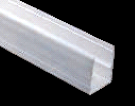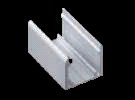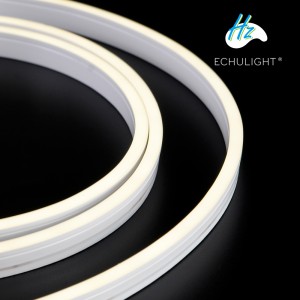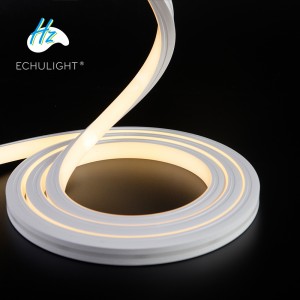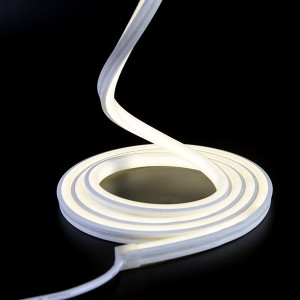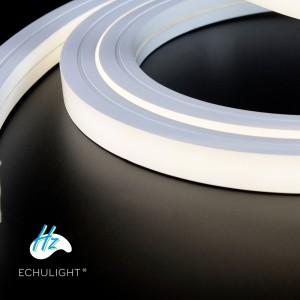HZ-S0206
Структурні параметри

Основні параметри
| Модель | HZ-S0206 |
|
Колірна температура/колір | 2300 тис |
| 2700 тис | |
| 3000K | |
| 4000K | |
| 6000K | |
| Відповідна світла смуга | 2216-240-24V-3мм |
| CRI | >90 |
| Напруга(V) | 24 |
| Електричний струм (A) | 0,48 |
| Потужність(Вт/м) | 5 |
| лм/довжина хвилі | 107 |
| 108 | |
| 113 | |
| 126 | |
| 130 | |
| Розмір(мм) | 2,5×6 |
| Стандартна довжина | 5000 мм |
| Одиниця зсуву (мм) | 25 |
| Рейтинг IP | IP67 |
Спосіб проводки

Механічні параметри
Клейова пробка

Виробничий процес

Заготівля сировини
1. Вибір мікросхеми: Відповідно до вимог щодо яскравості, колірної температури, індексу передачі кольору та інших властивостей у дизайні продукту, високоякісні світлодіодні чіпи SMD закуповуються у надійних постачальників. Перед закупівлею ці мікросхеми повинні пройти сувору вибіркову перевірку, щоб переконатися, що електричні та оптичні властивості відповідають стандартам.
2. Закупівля друкованої плати: Виберіть відповідну високоякісну плату FPCB, виміряйте її термостійкість, провідність і гнучкість і одночасно придбайте різні електронні компоненти, необхідні для виробництва, такі як конденсатори та резистори, усі вони повинні відповідати встановленим стандартам якості.
3. Закупівля допоміжних матеріалів: Придбайте допоміжні матеріали, такі як клей 3M для складання стрічки, паяльну пасту для зварювання та клей для герметизації та захисту, і переконайтеся, що їх в’язкість, стабільність та інші характеристики відповідають процесу виробництва стрічки.
Процес виправлення
1. Друк паяльною пастою: Паяльна паста точно наноситься на позиції контактних площадок друкованої плати FPCB. За допомогою високоточної машини для друку паяльної пасти та відповідно до попередньо встановленого шаблону забезпечується однорідність і точність товщини та форми паяльної пасти, закладаючи хорошу основу для подальшого нанесення штампів.
2.Латка з бісеру: Придбані SMD світлодіодні кульки швидко і акуратно кріпляться за допомогою автоматичного монтажу на надруковані паяльною пастою майданчики згідно з макетом дизайну. Процес латання контролюється системою машинного зору протягом усього процесу, і незначні відхилення можна вчасно виправити.
Візуальний огляд
Проведіть ручний візуальний огляд накладної світлодіодної стрічки.

Пайка оплавленням
1. Налаштування параметрів: Відповідно до характеристик паяльної пасти, що використовується, і специфікацій кульок ретельно відрегулюйте параметри кожної температурної зони на паяльному апараті оплавленням, включаючи температуру попереднього нагрівання, швидкість нагрівання, пікову температуру оплавлення та швидкість охолодження. Точне налаштування параметрів - запорука якості зварювання.
2. Виконання зварювання: Розмістіть виправлену друковану плату на конвеєрній стрічці паяльного апарата оплавленням. Коли друкована плата по черзі проходить через зони попереднього нагрівання, оплавлення та охолодження, паяльна паста нагрівається, щоб розплавитися та затвердіти, реалізуючи надійний електричний зв’язок між кульками та друкованою платою. Протягом цього періоду оператор приділяє пильну увагу стану роботи обладнання.
Огляд і ремонт
1. Візуальний огляд: Проведіть попередній візуальний огляд звареної смуги, щоб перевірити, чи немає будь-якого віртуального паяння, відсутності пайки, безперервного спаювання кульок, чи кульки пошкоджені чи зміщені, а також чи немає на друкованій платі будь-яких подряпин чи інших дефектів зовнішнього вигляду. .
2. Тест увімкнення: Підключіть смужку до відповідного джерела живлення 24 В, спостерігайте за станом освітлення кульок, перевірте, чи освітлення рівномірне, чи є стробоскопічне світло та чи нормальна колірна температура. Позначте дефектні продукти та залучіть професійний обслуговуючий персонал для їх ремонту.
Неонова екструзія
1. Змішування та обробка матеріалів: Додайте тверду силіконову сировину та добавки, такі як вулканізуючі агенти, у змішувач у певній пропорції та перемішуйте та обертайте, доки твердий силікон не стане повністю однорідним. Для деяких особливих вимог до світлових смуг може знадобитися додати кольорову маткову суміш та інші матеріали для регулювання кольору.
2. Обробка гнучкої плати FPCB:Гнучка плата FPCB із встановленими світлодіодними намистинами та завершеним паянням оплавленням піддається обробці від удару старіння, щоб перевірити її стабільність і надійність. Після удару старіння вся гнучка панель FPCB розміщується на верстаку, покритому антистатичною шкірою для відділення плати, і ділиться на окремі гнучкі стрічки FPC. Яскравість кожної світлодіодної кульки перевіряється, а кваліфіковані змотуються.
3.Екструзія: Розділіть перемішаний і однорідний твердий силікон за потреби, потім відправте гнучку стрічку FPC в екструдер, обладнаний екструзійною матрицею, і відправте розділений твердий силікон. Одночасно увімкніть духовку для випікання та екструдер і почніть екструзію та випічку. Під час процесу екструзії пластифікований силіконовий розплав рухається вперед під обертанням шнека та проходить через головку екструдера. Шнек і матриця екструдера чинять тиск на розплав, щоб екструдувати його в рукав або оболонку стрічки неонового світла відповідно до форми та розміру матриці та загорнути в неї гнучку плату FPC.
Охолодження та формування
1. Охолодження: Екструдована неонова світлова смужка відразу потрапляє в охолоджуючий пристрій, такий як резервуар для охолоджувальної води або пристрій повітряного охолодження, завдяки чому силікон швидко охолоджується, твердіє та зберігає форму та розмір під час екструзії.
2. Формування:Неонова світлова стрічка після охолодження має певну твердість і стабільність форми, тому її можна обробляти та обробляти згодом.
Подальша обробка
1.Різка та обрізка: Виріжте та обріжте екструдовану неонову смугу відповідно до необхідної довжини. Зазвичай для розрізання світлової стрічки стандартної довжини використовується ріжуче обладнання або інструменти для різання.
2. Перевірка та тестування: Виконайте перевірку зовнішнього вигляду, тест увімкнення тощо на неоновій світловій смузі зі встановленими світловими намистинами, щоб перевірити, чи відповідають світловипромінювання, рівномірність кольору, електричні характеристики тощо вимогам світлових намистин, і видаліть дефектні вироби.
Збірка та упаковка
1. Збірка аксесуарів: Наклейте клей 3M на перевірену кваліфіковану стрічку, щоб полегшити подальше встановлення. Для водонепроникних планок буде проведена додаткова герметизація, додані водонепроникні манжети, гумові прокладки та інші компоненти.
2. Упаковка та складування: Намотайте та запакуйте стрічки впорядкованим чином відповідно до стандартної довжини, наприклад 5000 мм на рулон, покладіть на пластикову плівку та картонну упаковку, прикріпіть етикетку продукту із зазначенням технічних характеристик, моделі, дати виробництва та іншої інформації, а потім перемістіть їх на склад для зберігання, в очікуванні відвантаження.
Упаковка та доставка

Про нас
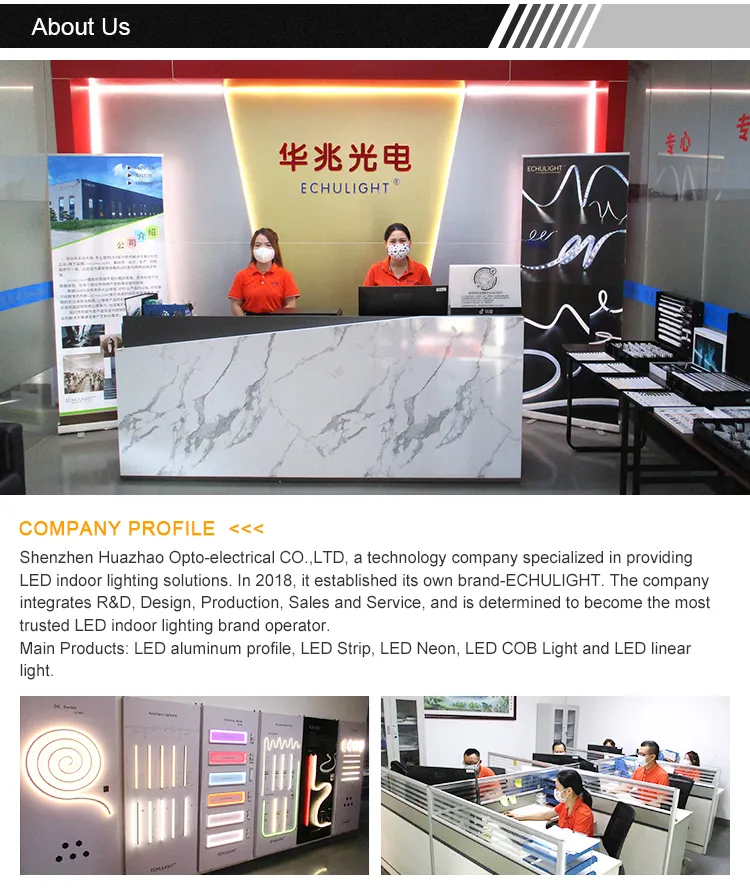
Наша фабрика
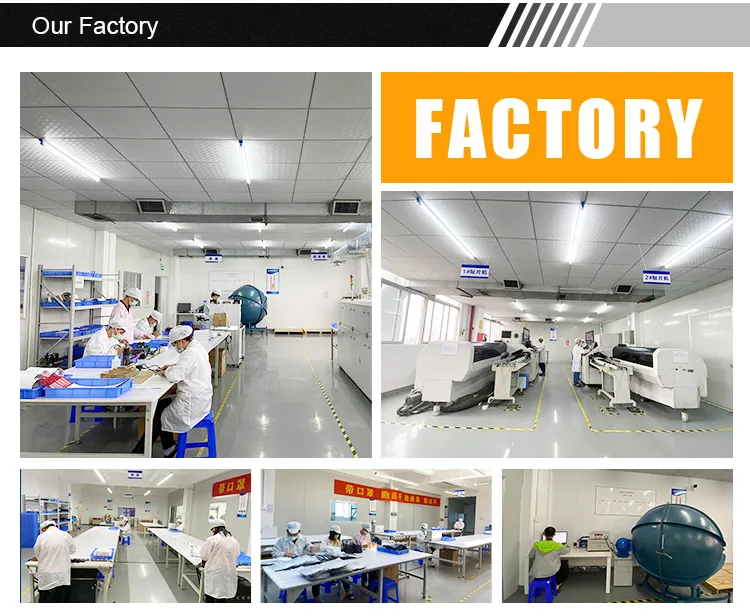
Наші переваги
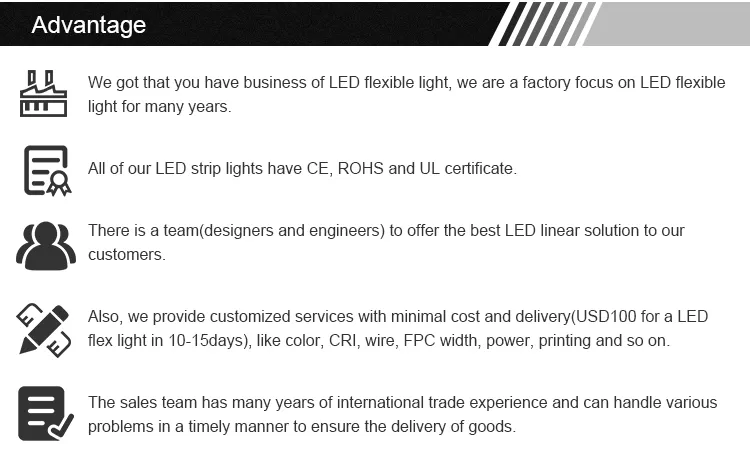
Сертифікат
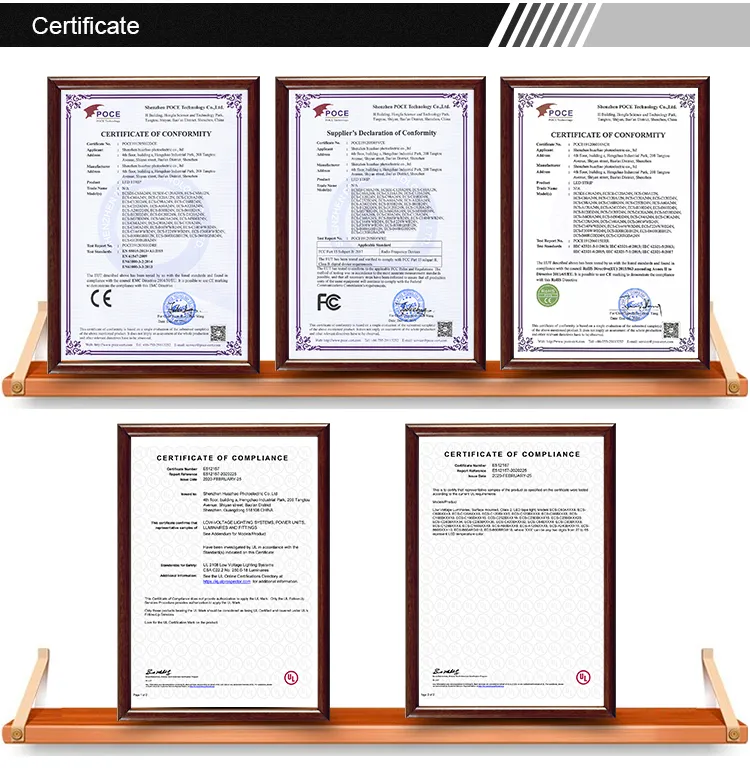
Доставка та оплата

FAQ
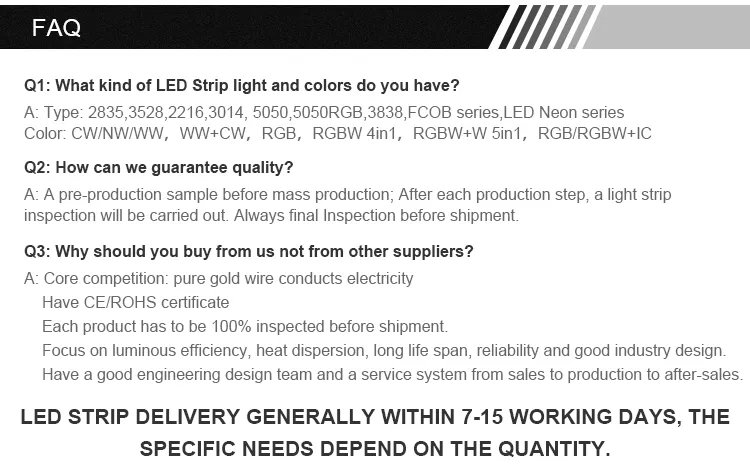
Пов'язаніПРОДУКЦІЯ
-

Телефон
-

Електронна пошта
-

Топ








